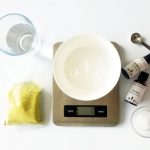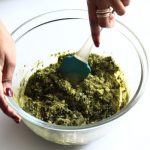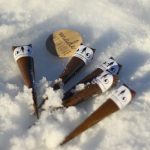08 Aug Simple Henna Recipe

In the post ‘the difficult shift from commercial cones to home-made cones,’ I briefly shared my henna recipe with you’ll. But I thought to myself later, there’s no point putting my recipe out there and letting people copy without understanding. I want to share with you why I use the ingredients that I do and why each ingredient is essential to making a perfect henna paste for body art.
Ingredients to make a Bridal Quality Henna Paste
- Artisan Henna Powder
- Sugar
- Essential Oil
- Liquid
Why Artisan Henna Powder?
Artisan henna powder is what I use for all my clients and myself. It’s years of collecting and testing different mehndi powders available in the market and sourcing for the finest product. We receive our henna powder direct from the farmers of Rajasthan. The crop is super fine, triple sifted and Yes, it’s the freshest 2016 batch! Artisan Henna Powder is made by the highest quality henna leaves that are picked, dried and pulverized into a fine power.
Why use sugar?
We need some sugar in our paste so that the henna pattern sticks to your skin. If the henna is not able to stick to your skin, then it will all crumble and fall off – which isn’t ideal when you’re hoping for a dark henna stain. But it’s also critical that you use the right amount of sugar in your mix. Too much sugar means, you can ruin your paste.
Here’s a rough estimation for how sugar works in henna paste.
80% Humidity – 10g Sugar
60% Humidity – 15g Sugar
30% Humidity – 30g Sugar
Please don’t live by this measurement as it’s only a rough guide! It really depends on your individual climate, temperature and humidity levels. Use this guide and test out +/- 5g of Sugar depending on your local conditions and see what works for you. You’d also rather have less sugar than more sugar, so add slowly! Too much sugar will make your henna too ‘melty’ and will ruin your designs.
Why Essential Oils?
You need good quality pure essential oils which are steam distilled. Not diluted oils or olive oil or any random cooking oil! You need 100% pure essential oils to help release the lawsone dye from the henna plant (lawsonia Inermis). But that doesn’t mean you can use any essential oil. Plants produce organic compounds such as starch, sugars and terpenes. You would have to use an oil that contains high amounts of monoterpene alcohol such as Cajeput/ Tea tree Essential Oil. Most other essential oils you add are for scent and is optional. Lavender Essential oil may be used for children, pregnant women and people with sensitive skin as an alternative. Although essential oils are natural, they are still chemical compounds and must never be used directly on your skin. Always seek a certified medical practitioner or professional when in doubt.
Why add Liquid?
You need liquids to make a paste, that’s pretty straight forward. In Australia and Singapore, we get pretty good water from our tap, so I just use the tap water for FREE! But of course you can use many different types of liquids – Tea, coffee, lemon juice, distilled water, rose water and more! Don’t mix everything, it might be weird, just pick one and go for it! The liquid doesn’t significantly affect the stain result. Its more about smell and personal preference if you asked me.
To recap, Here’s the AP Henna recipe:
100g Artisan Henna Powder
30g Essential Oil
*20g Sugar (Changes according to your local climate)
Water to your desired consistency (like toothpaste)
Enjoy making your own home made henna and leave your comments and questions below 🙂




Sorry, the comment form is closed at this time.